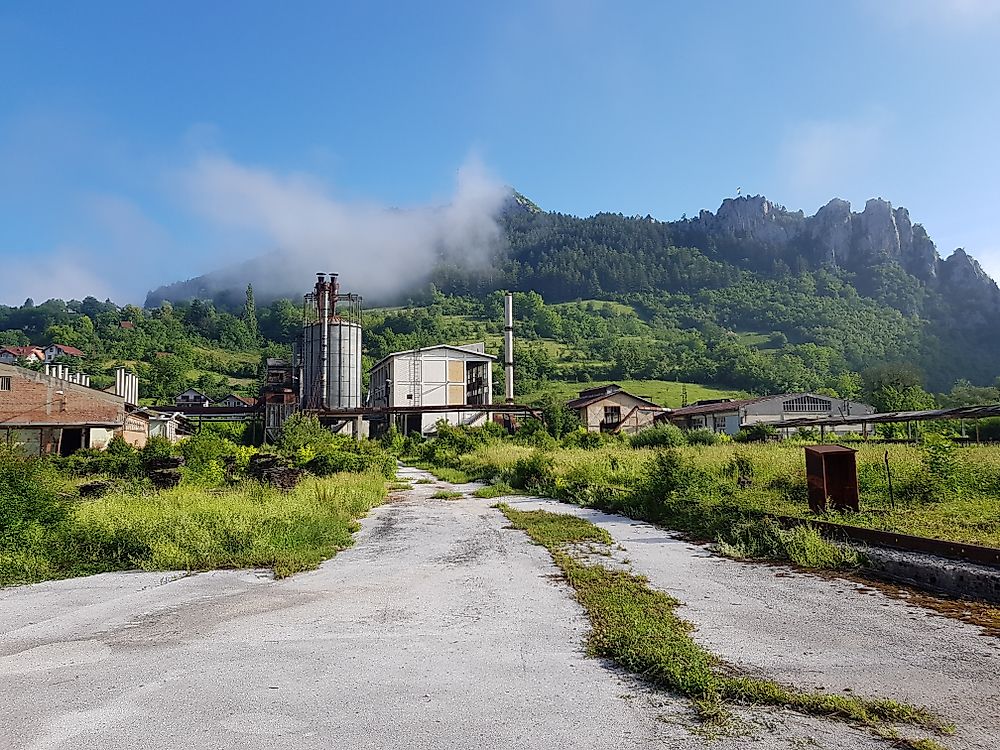What Are The Major Natural Resources Of Bosnia And Herzegovina?

Bosnia and Herzegovina is a Balkan country in southeast Europe. The country relies mainly on export trade as well as foreign aid and remittances. The highly decentralized government has hampered coordination of economic policy and reforms in the country. On the other hand, excessive bureaucracy and the heavily segmented market has discouraged foreign investment in the country and has made the country rank as one of the least competitive in the region. However, the country has numerous natural resources.
Land
Bosnia and Herzegovina has arable land which covers 19.36% of the total land area, and 1.99% is under permanent crops while about 11.6 square miles of land is under irrigation. Some the most fertile soils are found along the valley of rivers such as Una, Sava, Drima, Bosna, and Vrbs. These are the areas where crops such as wheat, corn, soybeans, and barley are cultivated. Other crops cultivated in the region include fruits such as pears, plums, and apples as well as vegetables and other herbs for medicine.
Oil And Gas
Oil exploration in the country could be traced back to the period of the Austro-Hungarian Empire in 1898 when the first oil field was discovered near Tuzla and Brcko in mount Majevica. However, to this day no oil is produced in the Bosnia-Herzegovina, and in 2013 it imported 20,690 barrels per day. Currently, most rich oilfields are found in the northern part of the country. In the 1990s before the break-up of Yugoslavia, Amoco the American oil company and British consultants had carried out extensive research in Bosnia and indicated that oil deposits are in the southern and northern part of the country. However, the war stalled the undertaking, and nobody knows the exact quantities of oil in the country, and it is estimated to be about 20 million tons in the northern part of the country and about 500 million tons in the southern regions.
Minerals
Bosnia and Herzegovina has numerous types of minerals found in the country, and some of the top minerals in the country include coal, steel iron ore, zinc, lead, bauxite, and manganese. Mining accounts for 10% of the industrial production in the country. Production of iron ore is centered near Ljubija, Jablanica, Radovan, and Vareš, while lead and zinc are mined at Srebrenica, Vareš, and Olovo. Before the war broke out, Bosnia and Herzegovina were famous with major metallurgical industries in the former state of Yugoslavia, which was a major producer of alumina, bauxite, and aluminum.
Water
Bosnia and Herzegovina is famous for its pristine and clean waters especially in the mountains where they drain the most of the country and finally flow to either Adriatic or the Black Sea. Most of the rivers in the country flow into the Sava River which is the largest tributary of Danube River. Bosnia and Herzegovina has 262 large and small rivers and the largest in the country include Una, Neretva, Drina, Trebižat, Buna, Vrbas, Sana, Rakitnica, Trebišnjica, and Pliva among others. The primary source of electricity generated in the country and derives 41% of its power from hydro.
Beautiful Scenery
Bosnia and Herzegovina has one of the most beautiful scenery in the Balkan region and has been receiving tourists from around the world. The country is also home to national parks and nature parks such as Blidinje Nature Park, Sutjeska National Park, Hutovo Blato Nature Park, and Una National Park. Bosnia and Herzegovina is among the most visited countries in the Balkans and it is expected to have the world’s third highest tourism growth rate until 2020.
The Economy Of Bosnia And Herzegovina
Bosnia and Herzegovina is currently the world’s 97th largest export economy, and in 2016 it exported goods worth $5.95 billion and imported goods valued at $9.3 billion, leading to a negative balance of trade of $3.33billion. In 2016 the country’s GDP was $16.9 billion, and GDP per capita was $12,200. Some of the top export destinations include Germany, Italy, Slovenia, Croatia, and Austria.











